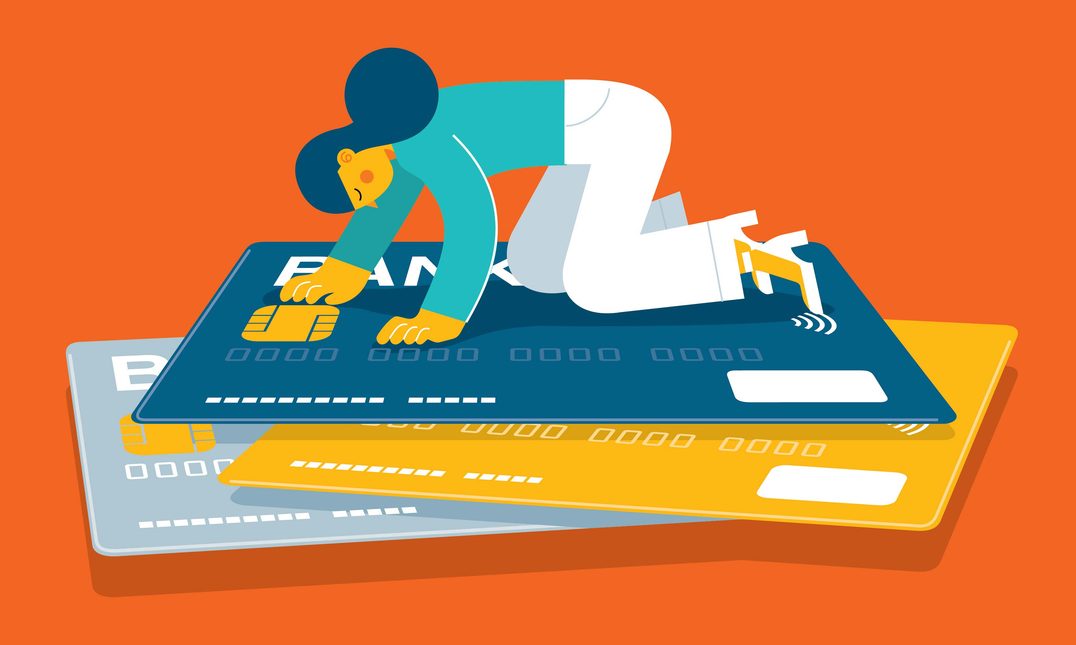
Credit card offers start looking pretty appealing, especially when it comes to the expenses that actually make for a good life. Image: Sorbetto.
I’ve always been afraid of debt. I don’t even have a credit card – I had one briefly and realised how quickly I was becoming reliant on the idea of purchasing things I couldn’t currently afford on the basis that I would somehow be able to make the repayment at a later date.
It scared me, and I paid off the card and closed it within a few months of opening it. The debt I have now is the accepted kind – a mortgage and a car loan.
But the reality of the economic conditions we’ve grown up with means that for many of my generation, debt is a fundamental aspect of life. Without it, we’re unlikely to have half the experiences we imagined for ourselves when we were younger.
Recent analysis from a credit bureau, illion, found that there is a stark disparity in credit risk across generations – where the risk of default for people aged between 41 and 50 is decreasing, it’s increased for people under 30, and under-25s are experiencing the highest levels of credit stress.
Partly, I believe this is due to different attitudes towards debt, but I feel those attitudes are a result of the circumstances we’re contending with.
For my parents, and many of their generation, they experienced significant increases in their earning capacity over time, while their debts remained low as a percentage of their income. The first loan they ever took out was for less than $100,000, and the return on investment when they sold that property was significant.
To afford a car or family holidays, they were able to save and spend what they had because their living costs weren’t putting them in the red every month, even with four kids. I appreciate that there has been plenty of struggle and disparity in every generation, but for a middle-class person with an average income, it was possible to have a relatively relaxed financial position that allowed for positive experiences without having to resort to borrowing.
But when your rent or mortgage is more than 30 per cent of your household income, and your living costs take a significant amount of what is left over, those credit card offers start looking pretty appealing – especially when it comes to the expenses that actually make for a good life. I’m talking about things like being able to afford gifts for people at Christmas, or that small holiday for a special occasion, or that little treat that you’ve been yearning for, whether it’s a new outfit for a haircut or something else that may not be strictly necessary but impacts your happiness.
When you add to this the availability of ‘buy-now-pay-later’ financing and personal loans, it’s easy to see how debt becomes normalised, and soon, it feels reasonable to borrow for purchases that we wouldn’t have dreamed of making in the past on borrowed money.
I know people who have funded overseas adventures entirely on credit cards and then faced the crippling reality of trying to pay off thousands of dollars in credit with an interest rate that makes it almost impossible to ever cut into the principal of the debt. I know people who have taken out personal loans to fund purchases and hobbies that are absolutely not ‘necessary’, but that are otherwise unattainable on the basis that they improve their mental health. I know people who are in so much debt on their Afterpay accounts that a large chunk of their salaries goes straight towards their payments for items that they have long since forgotten or no longer even use.
I don’t think that this willingness to enter into debt is solely due to financial illiteracy (although I do think there is a lack of education about financial security among my generation) but a result of accepting that our incomes will never match our rising living costs, and that reality doesn’t somehow erase our desires for different experiences in life.
Without a shift in our economic conditions, and with lenders able to continue to offer different forms of micro-debt without any real barrier to borrowing for individuals, I imagine the credit stress experienced by young people will only increase, and the impact will be felt more keenly later in life when earning capacities start to wane, putting a more sinister reality to the ‘buy-now-pay-later’ dynamic.





















